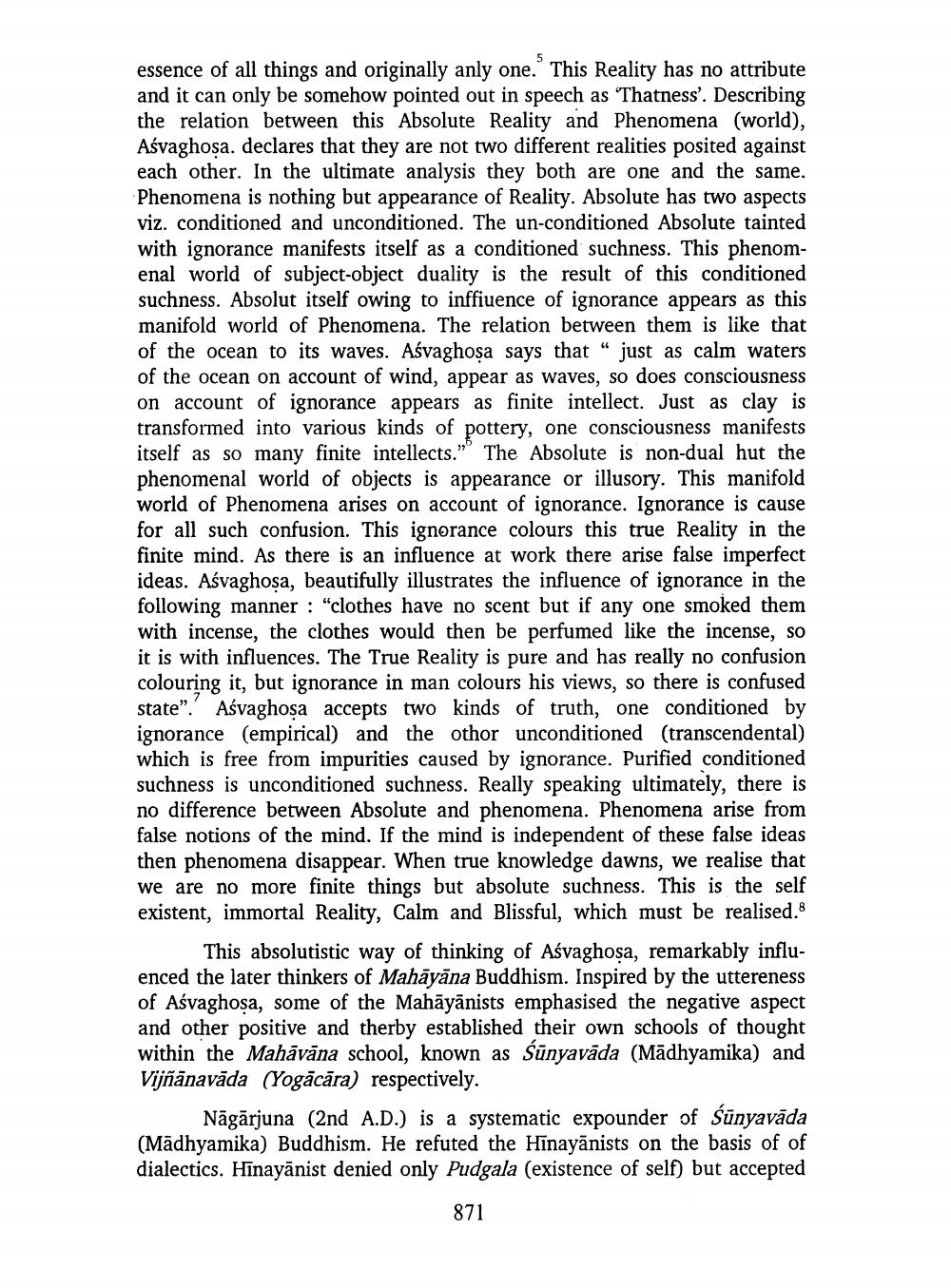________________
essence of all things and originally anly one. This Reality has no attribute and it can only be somehow pointed out in speech as "Thatness'. Describing the relation between this Absolute Reality and Phenomena (world), Ašvaghosa. declares that they are not two different realities posited against each other. In the ultimate analysis they both are one and the same. Phenomena is nothing but appearance of Reality. Absolute has two aspects viz. conditioned and unconditioned. The un-conditioned Absolute tainted with ignorance manifests itself as a conditioned suchness. This phenomenal world of subject-object duality is the result of this conditioned suchness. Absolut itself owing to inffiuence of ignorance appears as this manifold world of Phenomena. The relation between them is like that of the ocean to its waves. Ašvaghosa says that “ just as calm waters of the ocean on account of wind, appear as waves, so does consciousness on account of ignorance appears as finite intellect. Just as clay is transformed into various kinds of pottery, one consciousness manifests itself as so many finite intellects." The Absolute is non-dual hut the phenomenal world of objects is appearance or illusory. This manifold world of Phenomena arises on account of ignorance. Ignorance is cause for all such confusion. This ignorance colours this true Reality in the finite mind. As there is an influence at work there arise false imperfect ideas. Ašvaghosa, beautifully illustrates the influence of ignorance in the following manner : "clothes have no scent but if any one smoked them with incense, the clothes would then be perfumed like the incense, so it is with influences. The True Reality is pure and has really no confusion colouring it, but ignorance in man colours his views, so there is confused state".' Asvaghosa accepts two kinds of truth, one conditioned by ignorance (empirical) and the othor unconditioned (transcendental) which is free from impurities caused by ignorance. Purified conditioned suchness is unconditioned suchness. Really speaking ultimately, there is no difference between Absolute and phenomena. Phenomena arise from false notions of the mind. If the mind is independent of these false ideas then phenomena disappear. When true knowledge dawns, we realise that we are no more finite things but absolute suchness. This is the self existent, immortal Reality, Calm and Blissful, which must be realised. 8
This absolutistic way of thinking of Asvaghosa, remarkably influenced the later thinkers of Mahāyāna Buddhism. Inspired by the uttereness of Ašvaghosa, some of the Mahāyānists emphasised the negative aspect and other positive and therby established their own schools of thought within the Mahāvāna school, known as Sūnyavāda (Mādhyamika) and Vijñānavāda (Yogācāra) respectively.
Nāgārjuna (2nd A.D.) is a systematic expounder of sūnyavāda (Mādhyamika) Buddhism. He refuted the Hinayānists on the basis of of dialectics. Hinayānist denied only Pudgala (existence of self) but accepted
871




